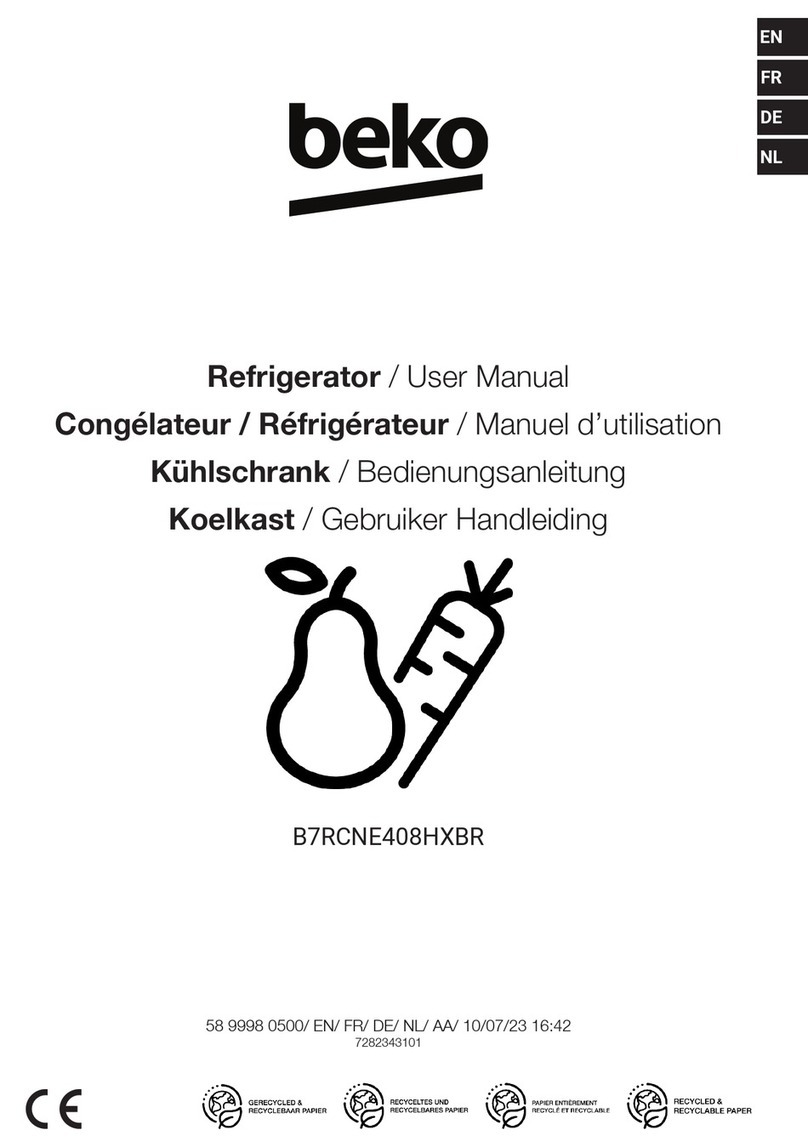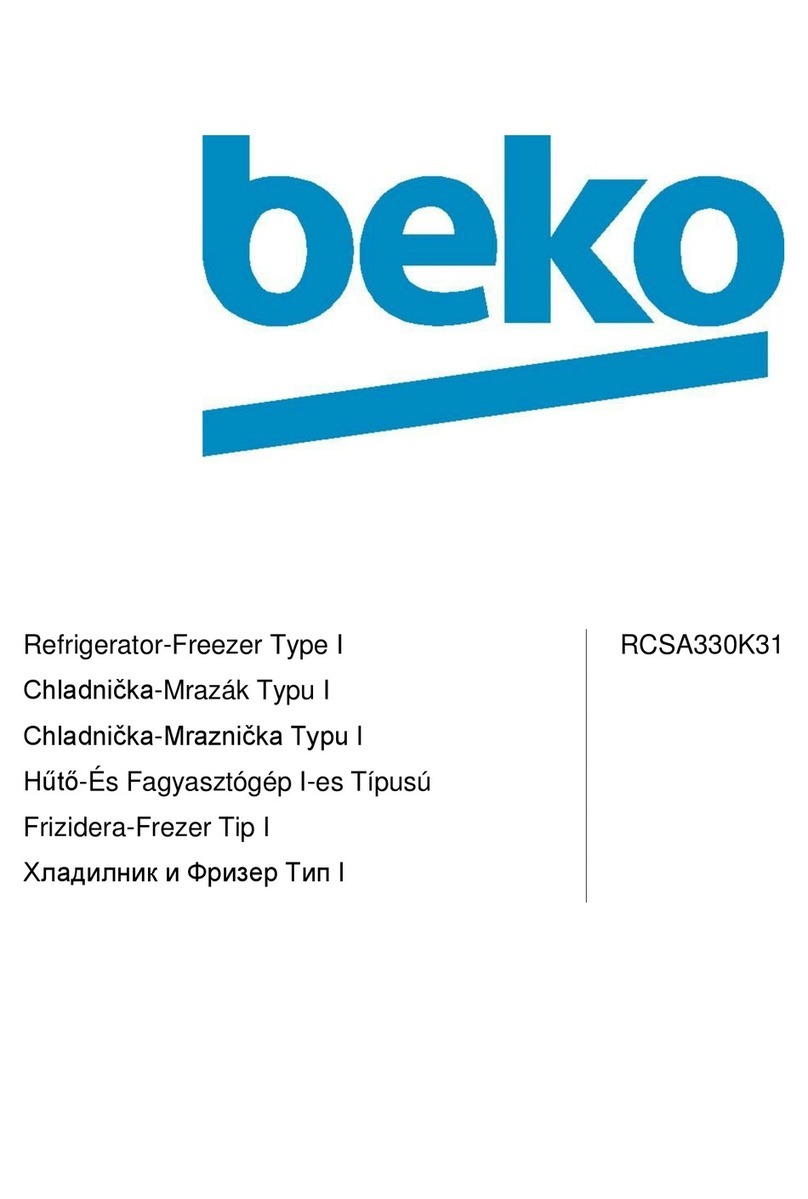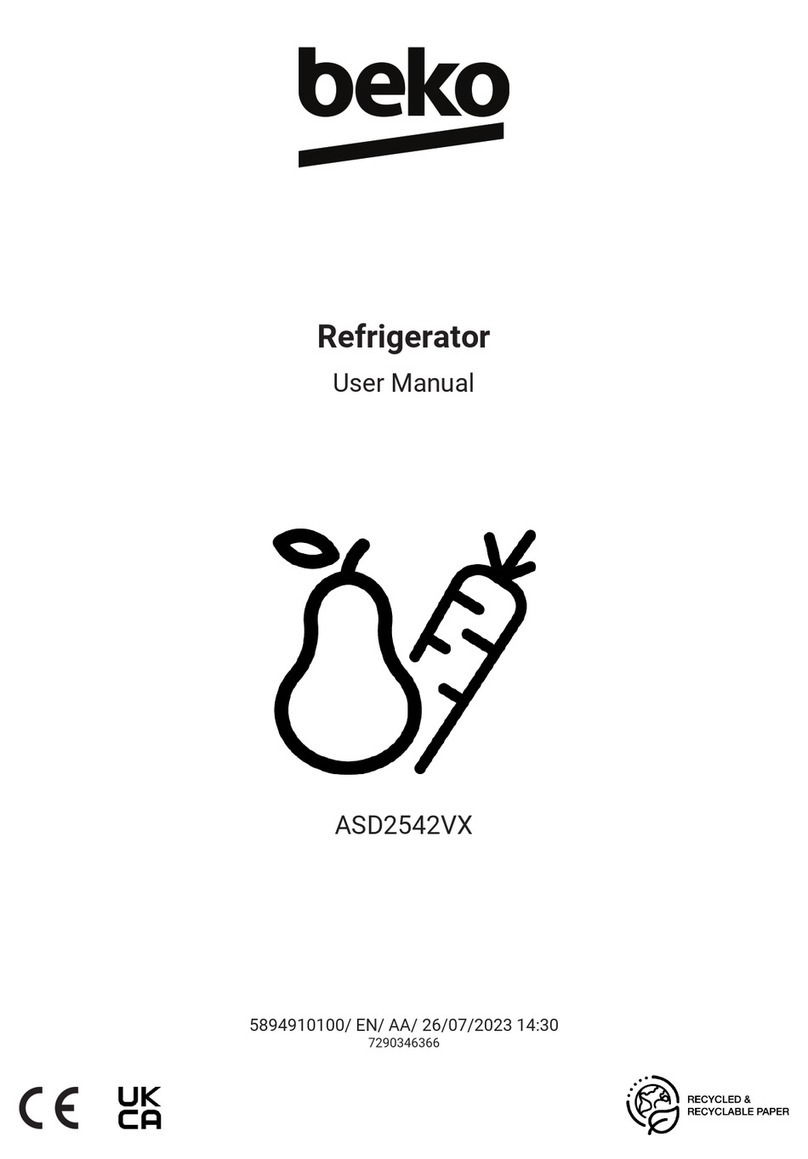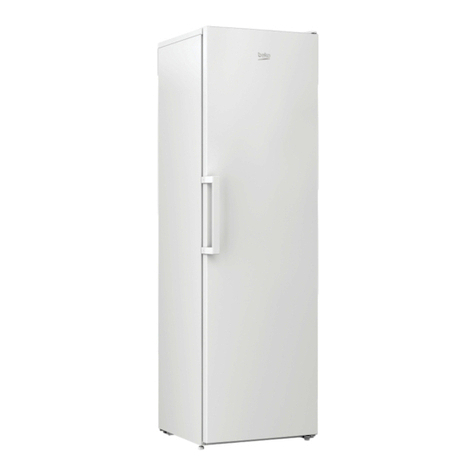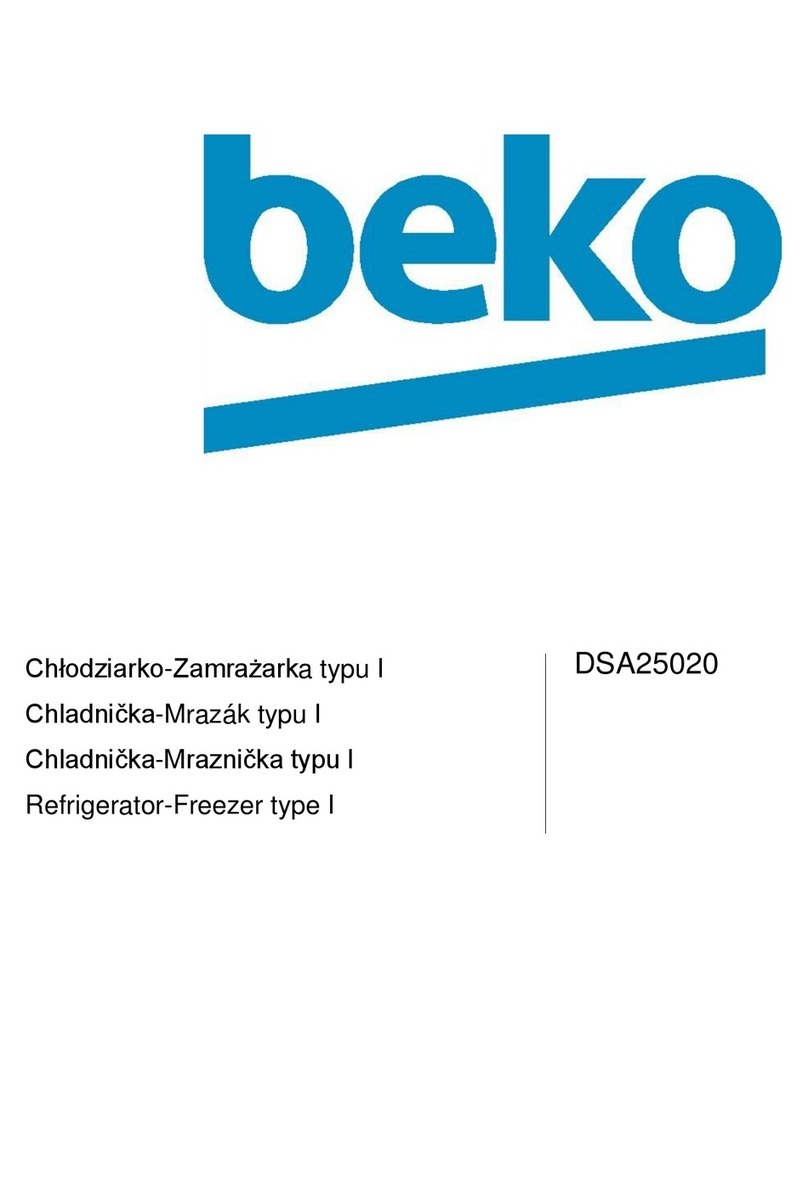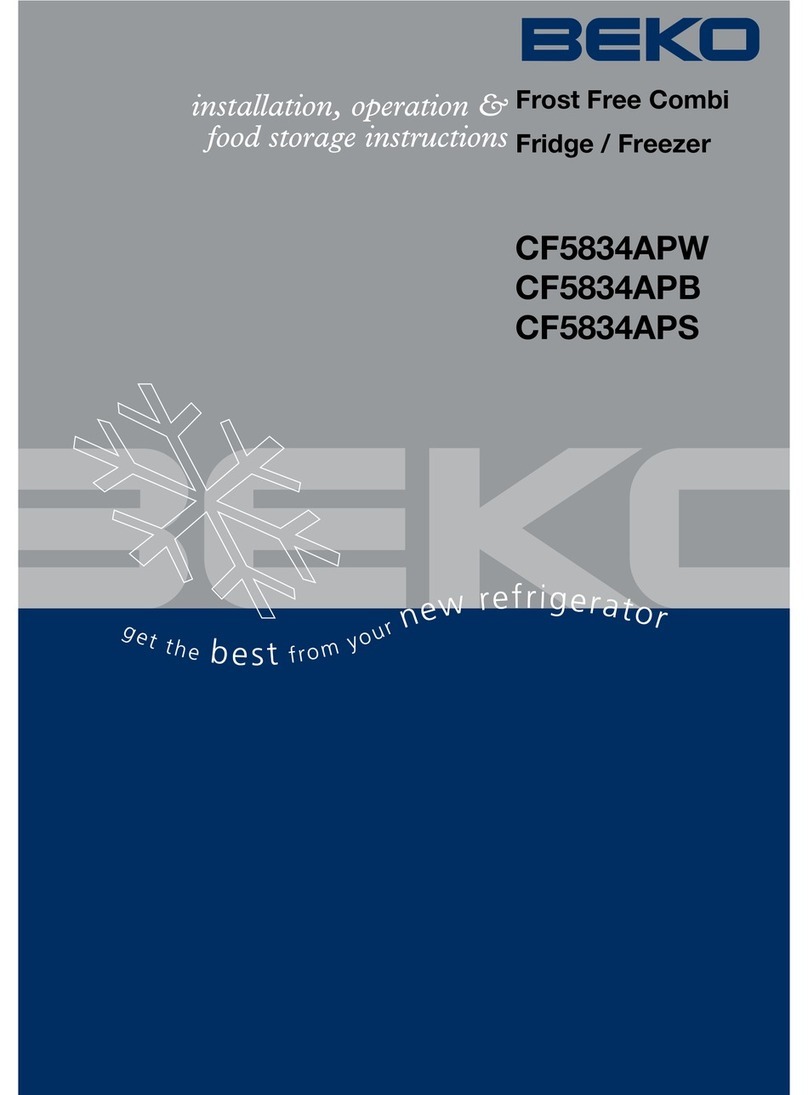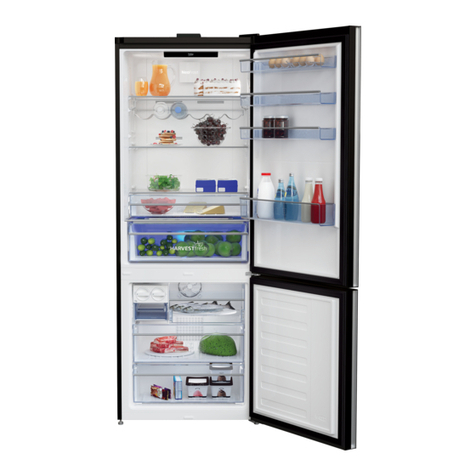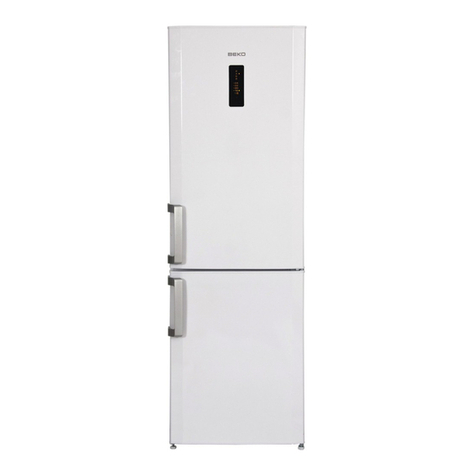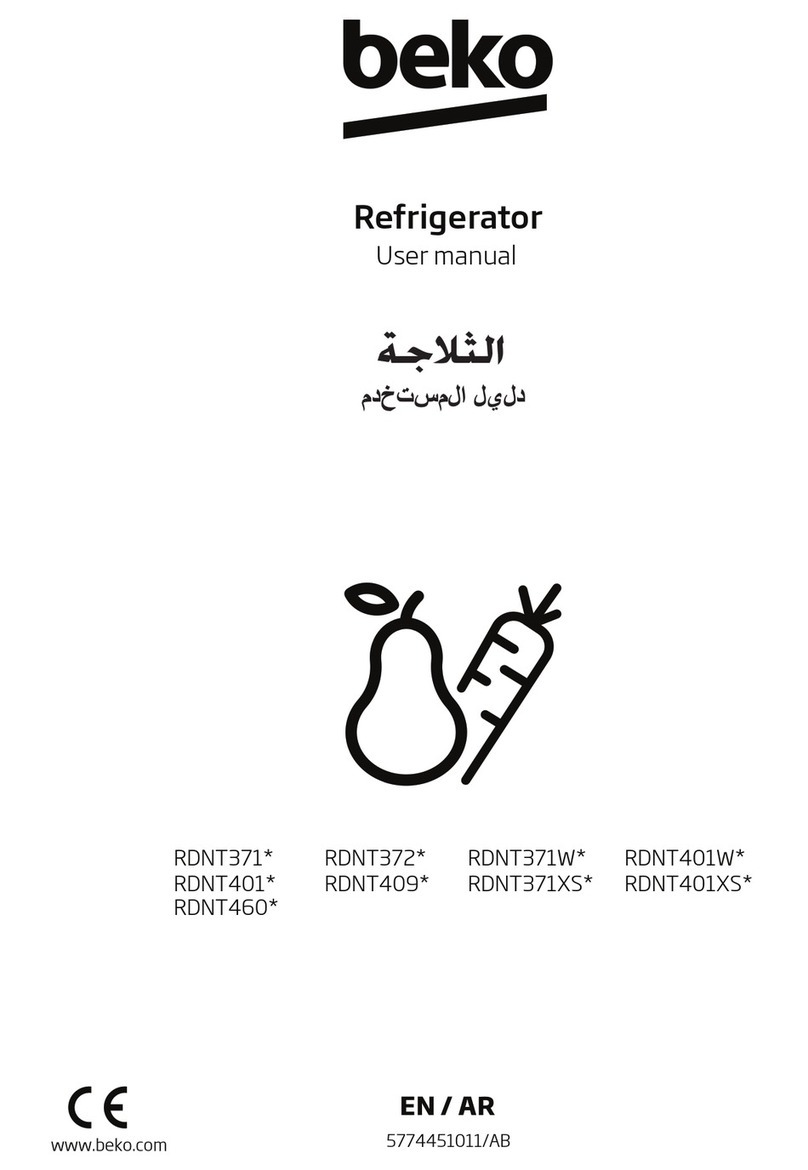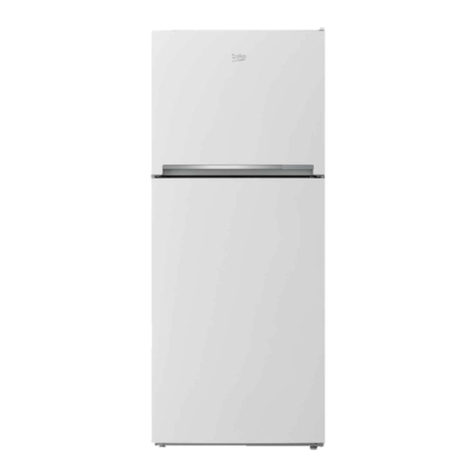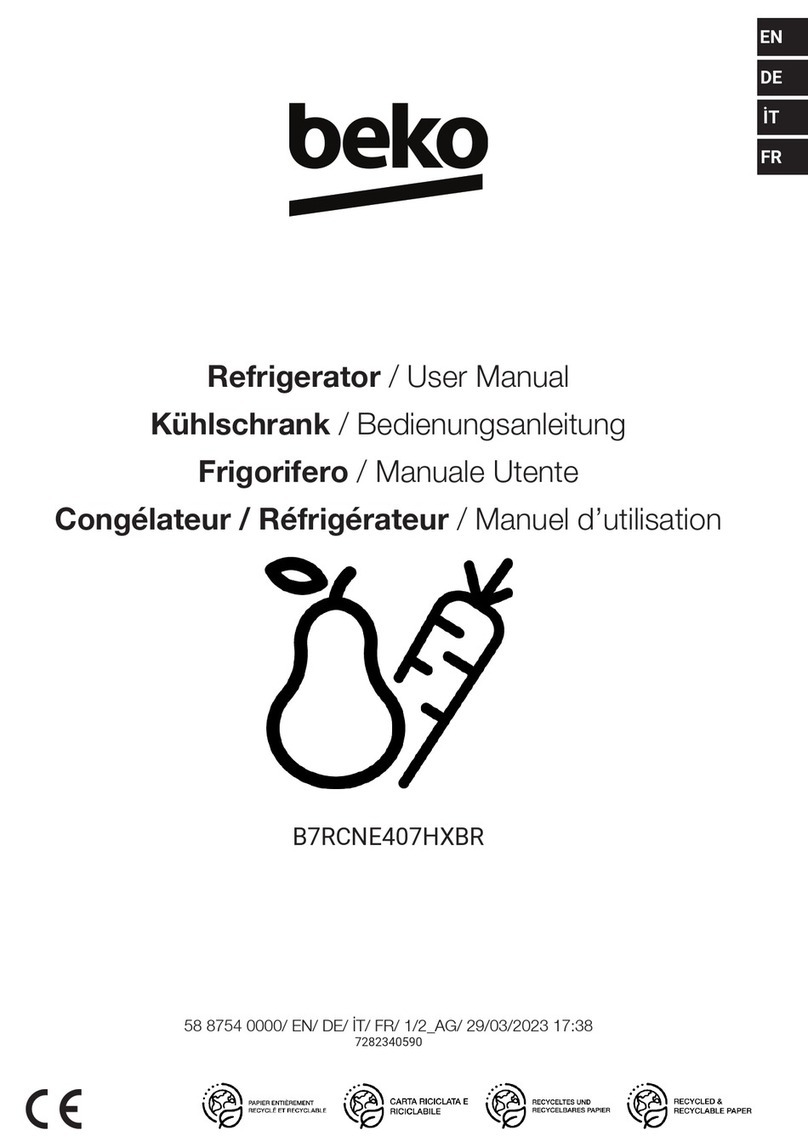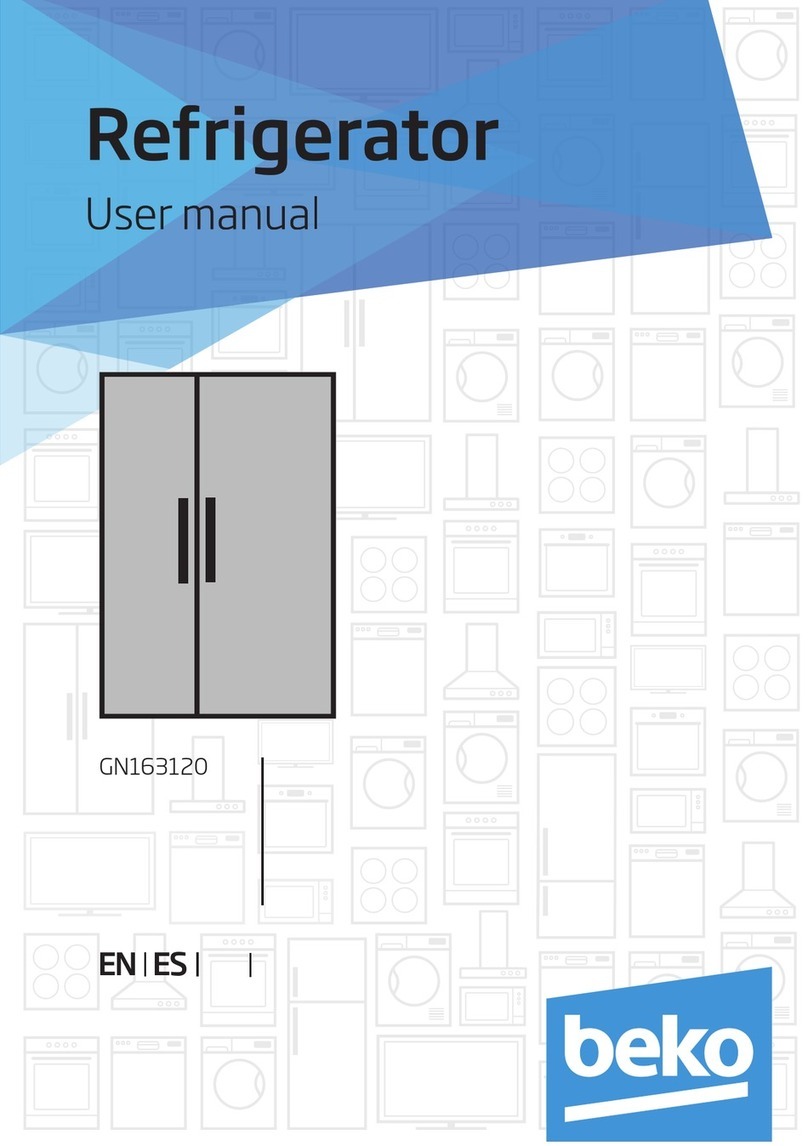WARNING!
In order to ensure a normal operation of your refrigerating appliance, which uses a completely environmentally friendly
refrigerant the R600a (flammable only under certain conditions) you must observe the following rules:
Do not hinder the free circulation of the air around the appliance.
Do not use mechanical devices inorder to accelerate the defrosting,others than the ones recommended by the manufacturer.
Do not destroy the refrigerating circuit.
Do not use electric appliances inside the food keeping compartment, other than those that might have been
recommended by the manufacturer.
DĖMESIO!
Norėdami užtikrinti normalų šio šaldymo prietaiso, kuriame naudojama visiškai aplinkai žalos nedaranti šaldymo medžiaga
R600a (degi esant tik tam tikroms aplinkos sąlygoms), veikimą, privalote vadovautis šiomis taisyklėmis:
Nesutrikdysite laisvos oro cirkuliacijos aplink prietaisą.
Norėdami pagreitinti atšildymo procesą, nenaudokite kitokių, nei gamintojų rekomenduojamų mechaninių priemonių.
Nesugadinkite šaldymo linijos.
Buitinio prietaiso maisto saugojimo skyriuose nenaudokite elektrinių prietaisų, nebent juos rekomenduotų gamintojas.
UZMANĪBU!
Lai garantētu jūsu sasaldēšanas iekārtas (kura izmanto viedei nekaitīgu dzesēšanas vielu R600a – uzliesmojošs tikai pie
noteiktiem apstākļiem), ir nepieciešams ievērot sekojošo:
Netrauciet gaisa cirkulācijai ap iekārtu.
Neizmantojiet nekādas mehāniskās iekārtas atkausēšanas paātrināšanai.
Nesabojājiet dzesēšanas ķēdi.
Nodalījumā pārtikas produktu glabāšanai neizmantojiet nekādas mehāniskās iekārtas, ja ražotājs to neiesaka.
HOIATUS!
Et külmutusseade, mis kasutab igati keskkonnasõbralikku külmutusagensit R600a (tuleohtlik ainult teatavatel tingimustel),
töötaks normaalselt, peate järgima järgmisi eeskirju:
Ärge blokeerige õhu vaba ringlust seadme ümbruses.
Ärge püüdke sulamist kiirendada mehaaniliste abivahenditega, mida tootja ei ole soovitanud.
Ärge kahjustage külmutusagensikontuuri.
Ärge kasutage toiduainete hoiukambrites elektriseadmeid, mida tootja ei ole soovitanud.
ВНИМАНИЕ
Для того, чтобы обеспечить нормальную работу Вашего холодильника в котором используется охлаждающий
реагент R600a, совершенно безвредный для окружающей среды (воспламеняющийся только в определенных
условиях), Вам следует соблюдать следующие правила.
Не создавайте препятствий для свободной циркуляции воздуха вокруг холодильника.
Не пользуйтесь никакими механическими приспособлениями и инструментами для удаления льда при
размораживании холодильника, коме тех, которые рекомендованы изготовителем.
Не допускайте повреждения охлаждающего контура.
Не устанавливайте внутрь холодильного отделения, где хранятся продукты, никакие электрические устройства,
кроме тех, которые рекомендованы изготовителем.
PARALAJMËRIM!
Për të siguruar një përdorim normal të frigoriferit tuaj, që përdor një mjet ftohës plotësisht ekologjik, R600a
(i ndezshëm vetëm në kushte të veçanta), duhet të ndiqni rregullat vijuese:
Mos pengoni qarkullimin e lirë të ajrit përreth aparatit.
Mos përdorni sende mekanike që nuk janë rekomanduar nga prodhuesi, për ta përshpejtuar shkrirjen e akullit.
Mos e prishni qarkun ftohës.
Mos përdorni aparate elektrike të parekomanduara nga prodhuesi brenda dhomëzës për mbajtjen e ushqimeve.



